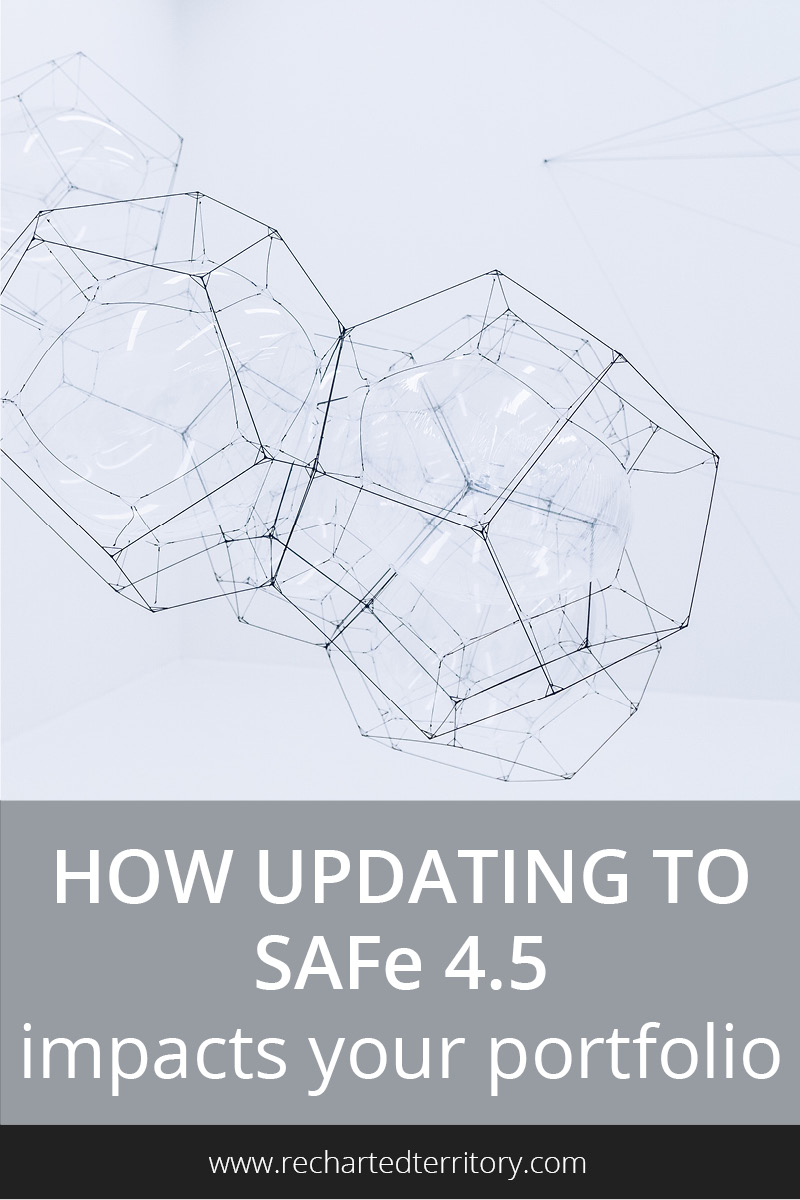

SAFe is short for the “Scaled Agile Framework”, which outlines a way for organizations to align multiple teams to create large systems while staying true to agile principles. Every so often the creators update the framework given feedback and case studies from the field, taking into account what’s working or could be improved.
They recently released SAFe 4.5, which is a slight modification from version 4.0. There are some changes that are relevant for those of us in charge of figuring out what to build in a complex, agile enterprise. You can check out the new version here for more details.
1. Lean Portfolio Management
The highest level of the Scaled Agile Framework is called the Portfolio level. This group translates business strategy into large initiatives, supports the cross-cutting needs of other teams, and makes sure that resources are allocated to support enterprise goals.
In version 4.0, the group that manages this layer was called “Program Portfolio Management” but they renamed it “Lean Portfolio Management” for 4.5. The Portfolio level in SAFe has always been rather light-weight, but the shift to using the term “lean” is an attempt to frame the SAFe Portfolio in a more agile light, in comparison to more centralized approaches. A “lean” portfolio approach retains some of the same elements as other portfolio management approaches. However, it tends to prioritize flow, set-based design, and rapid feedback cycles over detailed annual planning.
This version of the SAFe also comes with an emphasis on agile budgeting. A yearly budgeting cycle can cause lock-in on ideas (“we already promised it” or ” we already paid for it”), scope creep (“if I don’t get it in now I might not get a chance this year”), and make it more difficult to change direction. Basing the budget on a set of projects instead of themes or agile release trains tends to encourage a focus on delivering a set scope instead of achieving a business outcome. An agile budgeting process, in comparison, involves more frequent evaluations of how you’re allocating the budget.
2. Lean Startup and Lean UX
In version 4.5, they’ve added in specific references to Lean Startup methods. That includes activities like building a minimum viable product (MVP) for an epic and evaluating it before deciding whether to continue down that path. The cycle of defining a hypothesis, making a list of potential ways to test it, implementing your MVP and measuring results is a perfect fit for what we’ve been discussing here. They’ve also added in a section in the epic business case for identifying leading indicators so you can start tracking your impact early.
Similarly, user experience (UX) got a leaner overhaul with the recognition that the feature benefits we list in a business case are really hypotheses of benefits. You don’t know for sure if your solution will contribute to the desired outcome until you test it. Like your business model or functional features, the user experience will also require some build, measure, learn cycles to land on a solution that achieves the outcomes you’re looking for.
3. Continuous Delivery Pipeline
SAFe added some extra content about continuous delivery, which specifically means continuous activities such as exploration, integration, and deployment, with releases on demand. The more you move into continuous activity, the more important portfolio concepts are to keep people aligned while uncovering problems and capitalizing on new opportunities. Value frameworks, investment themes, strategic goals, and shared knowledge bases with information about customers, business processes, and technical architecture are all helpful tools for everyone to use when making quick decisions. Channels for collecting ideas, research projects, and time to synthesize the results should be accounted for during planning. Dashboards can help people see at a glance how resources are being spent without disrupting flow unnecessarily to ask for an update.
4. Additional Configurations
Version 4.0 had both a three-level and four-level version, the latter of which included an extra “Value Stream” level. Now they’ve changed it to showcase four different configurations:
- Essential SAFe: Team & Program
- Portfolio SAFe: Team, Program, & Portfolio
- Large Solution SAFe: Team, Program, & Large Solution (formally known as “Value Stream”)
- Full SAFe: Team, Program, Large Solution, & Portfolio
The configurable layout is nice and the website clearly outlines what to include at a minimum for each option. I can see this differentiation making sense for certain situations. In general, however, while your delivery approach might change given the number of teams and the size of the solution you’re building, the approach to figuring out what to build will be similar in all configurations, which we’ll discuss in the next section.
What this means for scaling Enterprise Design Sprints
Last year I wrote a series all about Enterprise Design Sprints, including how to scale them across all levels of the Scaled Agile Framework. Some of the SAFe terms have changed, but in general, you can still apply sprints at every level in the same way. Running an Enterprise Design Sprint is one way to guide your team through a fast hypothesis through validation cycle. A cross-functional team quickly explores the problem and solution space, designs models and prototypes, collects feedback, and builds roadmaps. This type of sprint is especially helpful if you have new team members or you need to tackle more ambiguous or cross-cutting challenges.
If you’re not using all of the available SAFe layers, just refer to the sections that apply to you. Each layer supports the one below it so if you don’t have a full stack then people in the highest layer may need to do more contextual research than they would otherwise need to do. Enterprise knowledge management tools still play an important role to leverage the hard work you’ve already done.
Each revision improves the Scaled Agile Framework and I encourage you to check out SAFe 4.5 if you haven’t already. It’s a great outline for enterprises to work with. Especially if you’re running into challenges aligning multiple autonomous teams.
Have you checked out the latest version of SAFe? Which aspects are you excited to implement? Which parts are you more hesitant about?